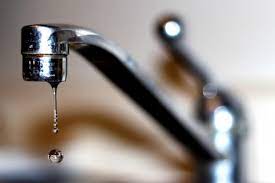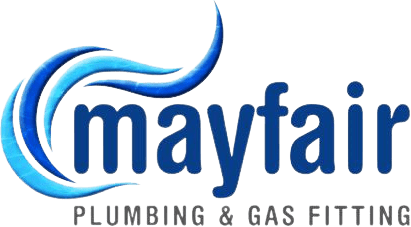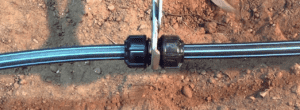You should spend no more than 50% of your monthly income on water, food and other necessities.
How much does your water bill come out to? Is it expensive, or is it an affordable price? Most people take the water they use for granted forgetting that it’s one of the bills that keep on seemingly going up.
In Adelaide, Australia, the average cost of a household’s monthly water bill is about $114 ($324 per quarter). This is $90 more compared to residents of Western Australia who pay an average cost of $234 on quarterly water bills.
Here is a quick look at the average water bill by state in Australia:
State Amount
- Western Australia: $234
- New South Wales: $246
- Victoria: $259
- Queensland: $300
- South Australia: $324
- Tasmania: $365
Adelaide Residential Water Bill
SA Water (South Australia Water) has a unique pricing model that takes into account the costs of providing services statewide. Hence, you pay the same price per kilolitre(kL) as every other residential customer around Adelaide, the nearby regional towns, and the hinterland. These costs apply to all residential houses, including maisonettes, retirement homes, home units, flats, and strata/community title residences, and vacant land.
Typically, Adelaide and most South Australian residents pay two charges –
- Fixed clean water supply charge.
- Water Usage Charges
Water use is priced per 1,000 liters (Kilolitre – kL).
Fixed Water Supply Charge.
The standard water fixed charge is the amount that is billed for having water supplied to your home, commonly referred to as the abuttal charge. Even if you are not using the water, the abuttal charge still applies on the basis that the water supply infrastructure is on your property.
The 2021-22 annual fixed price for having water supplied to your home is $274.40, billed at $68.60 per quarter.
Water Usage Charges, Tiered Pricing Rates
SA Water currently has a three-tier pricing model where the more water you use, the more liters you pay. It incentivizes Adelaide residents to be mindful of the water they use to reduce costs. This system is based on the average use of water per household each day in kilos. The three tiers are essentially the same across South Australia: regardless of where you are from or wherever you live in regional South Australia or metropolitan Adelaide, you should expect equal rates to pay.
The tiered pricing is calculated using daily thresholds to account for variations between the number of days in meter readings.
2021-22 tiered charges.
Tier Use price Price per litre Daily threshold
1 $1.966/kL $0.001966 0 to 383.6 L
2 $2.806/kL $0.002806 383.6 L to 1424.7 L
3 $3.040/kL $0.003040 Above 1424.7 L
Source: SAWater
How The Tiered Pricing Works
Estimate your monthly water usage
The average SA water bill for Adelaide and residents within South Australia averages at about $140 per quarter. Assuming each person uses an average of 190 liters per day, the water consumption for the average Adelaide household with two people consumes less than 0.3836 kilolitres (383.6 liters) per day threshold which incurs a cost of $1.945 per kL of water used as per tier 1 pricing.
If you have three or more people, your water usage threshold is expected to surpass 387.7 liters per day, therefore, incurring a cost of $2.775 per kL. Tier three pricing ($3.007 per kilolitre) applies when your daily water use surpasses the 1442.7 liters (1.4247 kL) threshold. This would mean you have more than seven people in your household, each using 190 liters of water per day.
What Affects Your Average Water Bills?
There are several factors that affect the average water bill in Adelaide and the rest of Australia. For example, during cold seasons/winter, people are inclined to have long hot showers while in summer, more water is often used on lawns and gardens.
Water bills can also vary depending on where you live because you are charged for the supply of water to your address as well as your usage. For instance, those who reside in rural or less populated regions might end up paying higher rates compared to those in urban residential areas, but the bill will still be charged according to the usage as well.
Changes in your everyday water habits or household situation can hugely affect your utility bills. For example, if there’s an increase in members in the household, planting new lawn grass, use of automated irrigation systems in the garden, you can expect to use more water. Other factors include leaking taps and inefficient home appliances such as toilets, dishwashers and washing machines.
9 Tips for Cutting Costs on Your Water Bills
With the tiered pricing system set to charge you more for every extra kilolitre of water you use, it would be a great idea to cut down on water usage and save money on your water bill. Even if water bills are probably the least expensive utility, small changes can add up to significant savings each year.
Here are a few tips to get you started:
Use water-saving appliances & fixtures.
When shopping for new washing machines, dishwashers, showerheads, and toilets, look for more water-efficient appliances. Pay close attention to the water rating efficiency seals. They have crucial information which indicates, for instance, that the machine runs on 20-40% less water and 50% less energy per load. In general, most front-loading washers use substantially less water compared to a top-loading model.
Also, consider upgrading your showerhead. On average, people who have old shower heads use about 120 litres per bath (at 18 about litres per minute). Modern water-efficient water-saving showerhead use only 9 litres of water per minute.
Install An Aerator To Your Faucets
Aerators reduce the amount of water coming out of the faucet by adding air into the water stream and creating a more forceful water flow. This is because they increase pressure without compromising performance. Aerators are actually 30% more efficient than standard faucets and can help cut down on water bills.
WaterSense-certified faucets use a similar concept and can be a great alternative if you can’t find a fitting aerator.
Fix leaky faucets & pipes
Drips from faucets are a common problem in the home. At first, the drips may not seem as obvious culprits to your bill, but as days & months go by, those drips add up considerably.
Did you know a single tiny little drop of water per second from a leaking pipe or faucet can lead to over 7000 liters of wastewater each year!
If you have any drips or leaks on your water system, get them under control. You can quickly fix most of them yourself. For the more complicated ones, you might have to call in a professional to do the work for you –it might cost you a few dollars to get it fixed, but it will save you more money in the long term.

Use A Dishwasher
Cleaning dishes by hand uses more water compared to a dishwasher. On average, a standard-sized dishwasher uses only 6 gallons of water per cycle. Water from a faucet flows at an average rate of 2 gallons per minute. So if it takes you about 3 minutes to wash your dishes, and considering that you mostly have to keep the water running, you’re better off using a dishwasher.
Tip: Don’t bother pre-rinsing the dishes and only run the dishwasher when it’s fully loaded. If you choose to do dishes by hand, plug up the sink or use a washbasin to conserve water and reduce your water bill.
Use Your Grey Water
The term “grey water” refers to all waste water used in the household that doesn’t include toilet water. This could be water generated from your dishwasher, kitchen sink, washing machine, bathtub, bathroom sink, and more! It’s estimated that one person can produce about 4000 liters of over greywater per month.
To cut on your water bills, you can catch and use that greywater to irrigate your fruit plants, lawn, and other landscaping plants.
Water your lawn at the right time
About 30% of your total household water used each day is devoted to outdoor uses—and the lawn in particular. While this figure varies throughout the year and in different seasons, the water going to your lawn is still considerably high, and there’s a lot of potential for water waste there. To reduce and cut down on your water bills, you can start by watering your lawn early in the morning or late in the evening to reduce the amount of water wasted to evaporation.
You can also:
- Turn off irrigation systems when they’re not needed to save water and money.
- Use mulch in gardens and around trees to reduce evaporation rates by up to 50 percent or more. This saves water while keeping your landscaping looking healthy all summer long!
- Plant native species, so you only need to water them once every two weeks during dry spells.
Take shorter showers
Each minute cut from your shower saves up to 11 liters!
One of the best ways to conserve water is by taking shorter showers to reduce the load on the hot water system Each luxurious and soothing long shower incredibly drives up your water bill. Try to limit your showers to about five minutes. In other words, if you reduce your shower time from twenty minutes to five, then it’ll take less water and energy. This, of course means less water & energy bills! It’s also a good idea to carefully choose the right hot water system in the first place.
Dual Flush Toilet Option
A dual-flush toilet is water efficient. In water-scarce regions, the dual flush toilet is a common water conservation measure. It provides water savings of up to 60% over a standard single flush toilet. Dual-flush toilets have two different flushes: normal flush for liquid waste and one with greater water volume for solid matter.
If Not In Use, Turn It Off
It’s not just a good idea, it also saves you money on utility bills.
Turning off the tap while you brush your teeth, lather your hair or shaving can save more than 50 litres of water every day. That adds up to more than 1000+ litres a month!
Bottom Line;
Water bills are something that most people can’t avoid, but there are ways to save water and money. If you’re not already doing these things, it’s a good idea to start! You should identify where the greatest water consumption is coming from in your household and take practical measures to reduce it (i.e., using less water when brushing teeth). Once you’ve done this, you’ll be better able to recognise other simple changes that will help lower your water bills for years into the future.
Emergency 24/7 Plumbing Services In Adelaide
If you are not sure how to replace old fixtures then it’s time to call in your local Adelaide plumber. We have the experience and expertise in modern systems that can help you reduce your annual water bills.
Call us today for all your plumbing needs within Adelaide and surrounding environs.




